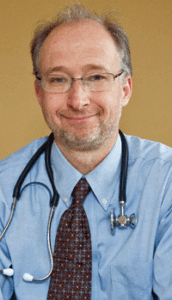The blog – taken from presentations at PolyBio’s Fall Long COVID Symposium – is about innovation at the treatment level in long COVID. Long COVID, like chronic fatigue syndrome (ME/CFS), like fibromyalgia, etc., presents a problem – it’s very complex. Neither studying nor treating it is easy, but some researchers are meeting the challenge by upping their game and using different methods to study and treat it in ways that we haven’t seen in ME/CFS before. This blog is about two of them but first a thought about the…

Why do major research efforts show up when they do? Why don’t they show up when they don’t? It may all come down to the interests of powerful researchers.
The Tenuousness of Medical Research
The whole thing seems so fragile. Take the LIINC group studying long COVID at the University of California at San Francisco which is “supporting dozens of studies“. From its small beginnings, LINC has turned into a mammoth and critical factor in long COVID research.
LIINC was launched very early – in April 2020 and since then has interviewed over 800 participants, banked over 50,000 samples, and shared 20,000 of them with over 50 long COVID projects.
We’re very lucky to have it, but the question arises: why did it show up and why did it do so at UCSF and not at, say, Johns Hopkins, Columbia, UCLA, or other top-rated medical schools? Why don’t we have ten LIINCS?
The same question applies to the Veterans Administration’s work on long COVID. The VA has never done any research that I can tell on ME/CFS, but it has become a big player in the long-COVID world. Ditto with Akiko Iwasaki’s work at Yale and David Putrino’s work at Mt. Sinai Why have places like UCSF (LIINC), the VA, Yale, and Mt Sinai come to play such prominent roles?
It seems quite haphazard. Aside from the RECOVER Initiative – which is funded by Congress – there’s no overall plan to tackle long COVID and that leaves it subject to all sorts of accidents of history.
Take ME/CFS. The Workwell Foundation’s early focus on exercise studies resulted in exercise being commonly nd profitably used as a stressor in ME/CFS studies but the entrance of the Workwell Foundation into the ME/CFS field was not an inevitability. It was more of a lucky break that began when an exercise physiologist named Staci Stevens came down with ME/CFS.
Indeed, judging by the bios of some of the LIINC leaders, the tentative answer as to how these efforts get started is that it’s personal. A researcher with clout simply decides to take long COVID (or any other disease) on and enrolls his colleagues in doing so.

Stephen Deeks appears to have been the catalyzing force behind the creation of LIINC.
Judging from his bio, Steven Deeks appears to have been the key to the emergence of LIINC. An internationally recognized expert on HIV pathogenesis and treatment, he boasts quite a resume. He’s published over 700 peer-reviewed articles and is the principal investigator of DARE (the Delaney AIDS Research Enterprise), an NIH-funded international collaboration aimed at developing therapeutic interventions to cure HIV infection.
His bio states that in early 2020, he leveraged his HIV research program to construct the “Long-term Impact of Infection with Novel Coronavirus (LIINC)” cohort and there, apparently, you have it. Deeks had the resources needed to start LIINC and it just grew and grew.
His colleagues are almost all HIV guys, many of whom have been trying to find a way to definitively clear the body of HIV. Michael Peluso‘s research is “aimed at understanding the HIV reservoir” and Tim Henrich is working on HIV reservoirs and developing cutting-edge treatments (immunomodulatory, cytoreductive chemotherapeutic and stem cell transplantation) to cure HIV. Priscella Hsue, Matt Durstenfeld, and Jeff Martin are all HIV researchers of one ilk or another. (Dan Martin is Ebola.)
In other words, because they’re already studying “long HIV”, they’re a perfect match for long COVID. While HIV is being kept under control by drugs – which can have significant side effects – the virus is still there – just as the coronavirus is still lingering in the tissues of many people with long COVID.
Stephen Deeks on Doing “Experimental Medicine”

Pharma needs a mechanism to get going. Deeks hopes to give them one on by doing small, super intensive studies.
Deeks came to the conference with a problem. He said that he and Michael Peluso have been beating the bushes trying to get pharma involved in long COVID but have been getting rejected left and right. The problem is that pharma wants a mechanism and they can’t give them one yet.
The field is making amazing progress in terms of what’s happening in the laboratory in coming up with these different pathways – and he feels we are moving in the same direction, but the progress, right now, is on the sidelines regarding treatments. They will not get to a cure until they can get pharma involved.
The most important thing, he asserted, that the long-COVID field needs to do is to come up with a therapeutically actionable mechanism that can encourage big pharma. One way to do that is using “experimental medicine” – an exploratory approach that both reveals the mechanisms involved in the disease and provides data on how to treat it.
In this case, it means using small studies of already available drugs that study the heck out of the patients that take them to learn what is going on in the body.
As other people at the conference did, Deeks emphasized how complex these infection-associated illnesses are. He said it’s probably not that “A” causes long COVID but it is more like A leads to B which leads to C and long COVID; in other words, a kind of perfect storm of dysregulation happens. Something like a virus causes inflammation, which damages the endothelial cells, which results in autoantibody production, etc. Note that all these pathways are actionable now using existing drugs.
That brought me back to Dr. Klimas’s supercomputer modeling work which suggested that people with ME/CFS get pushed and embedded in a new kind of dysfunctional normal that will require multiple treatments – done in the right order – to push them back to normality.
Then it was onto viral persistence, where we learned that viral persistence is probably not going to be “it”. The evidence shows that the spike protein is persisting for a year in some individuals – and in a subset of patients – spike protein in the blood is associated with symptoms (but not everybody). Viral persistence sparks an immune reaction in some people, for instance, but not in others.
Deeks noted that the viral persistence hypothesis has resulted in at least three antiviral (Paxlovid) long-COVID trials (RECOVER, Stanford, Yale) that are seeking to eradicate the virus, but then delivered a shocker – at least to me.
These drugs are not going to be able to clear the virus from the body. Antiviral drugs, it turns out, don’t do that – instead, they halt the replication of the virus. Those “persistent reservoirs” of virus – they’re going to stick around. The viruses that remain, but are not replicating, could still be causing problems.
We in the ME/CFS world know this from Williams and Ariza’s work at Ohio State which found that smoldering EBV infections that are not replicating but are pumping out toxic proteins can evoke a nasty immune reaction.
An ME/CFS researcher at Nancy Klimas’s lab also agrees. Travis Craddock’s models indicate that one antiviral is not going to do the trick with the Epstein-Barr virus. Yes, the virus can be temporarily suppressed but unless you can get at those viral reservoirs, once it sees an opening, it’s going to come roaring back. Craddock’s models indicate though, that a B-cell suppressor like Rituximab to the mix completely flatlined the virus – it was no longer able to reactivate. The model suggested the approach could theoretically produce a long-term reduction – not a forever reduction, but a long-term reduction of viral load.
As Deeks said, interventions are readily available. For the time being it may be more a matter of putting them together in the right way.
Monoclonal Antibody Study
Deeks and his team will be using a monoclonal antibody called AER002 in a small trial that is effective against all COVID variants through late 2022 and has the potential to get at a viral reservoir. Besides the usual inflammatory/coagulation markers, they’re going to do a deep dive into their patients’ physiology. They’ll be looking at the gut, the spinal fluid, the lymph nodes (biopsy), bone marrow, blood vessels, and their ability to exercise.
The results will be fascinating given the case reports we recently saw which featured complete and rapid recoveries from long COVID using an earlier monoclonal antibody (which doesn’t work against the current variants).
Anti-Inflammatory Study
Deeks cited his 20 years studying and treating inflammation in HIV concerning a trial of baricitinib (Olumiant) in long COVID that is underway. Olumiant is a Janus kinase (JAK) inhibitor used in rheumatoid arthritis and some other diseases. The elevated cytokines (IL-6, IL-1B, TNF-a), Deek said, suggest microglial activation. This is probably the kind of anti-inflammatory drug that Dr. Klimas has been wanting to test in ME/CFS for at least a decade.
Disruptive Innovation at the Clinical Level – David Putrino

Eschewing the NIH, Putrino went straight to industry to uncover treatments for long COVID, ME/CFS and others.
When David Putrino, PhD, at Mount Sinai was interviewed for a job at Mt. Sinai, he was told Mt. Sinai needed to innovate and that if he could come up with something innovative, he would have the job. He did not disappoint. He said he wanted to run a lab that would never use NIH grants.
When asked to explain, he said the average time to take a treatment from the bench (lab) to the bedside (patient) is 17 years. The reason for this is a focus on incremental science. While incremental science is important, Putrino explained that this hyper-siloization (new word!) works well in less complex illnesses, it doesn’t work well in infection-associated complex diseases like long COVID (and ME/CFS).
THE GIST
- Long COVID is spurring new ways to research, understand, and treat diseases – ways we haven’t seen before in ME/CFS.
- Stephen Deeks of UCSF beat the bushes trying to get pharma to get involved, but they wouldn’t – first they need a clear mechanism or target they can go after.
- Deeks reported that to get at mechanisms and potential treatments, his LIINC team is engaging in “experimental medicine” i.e.; it’s producing small trials of immune drugs that involve testing the patients extensively to find out what the drug did and what is going on in the immune system.
- He notes that antiviral drugs will stop the virus from replicating but will never cleanse the body of the virus. Monoclonal antibodies, however, can get into reservoirs of the virus and wipe it out.
- In an earlier blog, we saw that a monoclonal antibody could be very effective at helping some long-COVID patients recover but that antibody is not effective against the later coronavirus variants. Deeks’s first trial involves a monoclonal antibody which is.
- The second trial involves a rheumatoid arthritis drug that is focused on reducing the same inflammatory cytokines seen in long COVID thus far.
- David Putrino of Mt. Sinai then reported on his innovative effort to get treatments to patients as quickly as possible. Putrino’s goal is to never run dry – to always be testing things so that he always has something to offer his long-COVID, ME/CFS, etc. patients.
- Eschewing NIH grants, Putrino went straight to industry and said: if you will help fund a trial, we will run it and immediately use it in our large hospital system. Industry was excited, but the doctors in the hospital system balked.
- Putrino then opened the Center for Recovery From Complex Diseases in the Mt. Sinai system and is using doctors in that center to run clinical trials. That is the second Center of Excellence devoted entirely to diseases like long COVID, ME/CFS, and post-treatment Lyme disease. to open in the U.S. this year.
- That Center recently received a $6 million grant. Because everyone visiting the Center will go through the same testing protocol, they’ll be able to determine the similarities and differences between the different diseases. That’s an important step for a group of diseases that are clearly related but are rarely studied together.
- Putrino, who has helped to treat over 3,000 long-COVID patients, has identified three sets of patients. No matter what he throws at them, he can’t move the needle on about 10% of them. He can produce some improvement in about 70%, and about 15-20% recover.
Putrino got the job and instead of going to the NIH, he went to industry and told them if they had a product they thought would work, Mt. Sinai would put on a clinical trial using its hospital network. If the product worked, Mt. Sinai – which is a huge clinical center – will immediately adopt it.
Not surprisingly, he got some pushback. The tech transfer guys at Mt. Sinai wanted to know how Mt. Sinai was going to make money off something like that. Other researchers were leery because his team wasn’t being specialized enough; i.e. they didn’t demonstrate a “core competency”. The idea that they were simply trying to figure out what helps patients was not enough for them. They had other concerns as well – keeping the research centers and labs going, for instance.
Never Running Dry…
Putrino’s guiding principle, though, was different. His goal was to never run dry when it came to treatments. If something didn’t work, he would always have two or three other things to try. There would always be something innovative and novel to try.
The new approach worked at first. Putrino said they had companies coming out of the woodwork willing to fund clinical trials, but the doctors were the problem! They said they didn’t have enough time to learn about the treatment, said patients wouldn’t want it (?), the evidence base wasn’t good enough, they were afraid that technology is going to replace them (?), etc. In short, the perhaps overworked doctors balked at doing this.
Putrino shifted gears and opened the Center for Recovery From Complex Diseases at Mt. Sinai which is doing the testing. When something works he’s disseminating it nto the larger hospital system.
The Mt. Sinai Center recently received a $6.2 million grant from the Steven & Alexandra Cohen Foundation to study “long Lyme” and other infection-associated complex illnesses such as ME/CFS. Because everyone visiting the Center will go through the same testing protocol, they’ll be able to compare and contrast these diseases in “unprecedented detail”. (And so the field of post-infectious illnesses takes another step).
Plus, because they understand that single treatments probably aren’t going to do, they’re going to do “adaptive clinical trials”: clinical trials that involve combination trials.
Note that this is the second such Center to open this year (Metrodora was the first) that will focus entirely on this group of diseases – a good sign.
Calling the grant a “logical and important extension of our Center’s work”, Putrino said:
“For decades, people with long Lyme disease have struggled to find centers that can provide knowledgeable and compassionate care for their serious and debilitating symptoms. We are proud that our Center will be one of the few places in the world that is embedded in a major clinical institution to provide this care—this is a patient population that has been without access to adequate care for too long,”
“Millions of patients all over the world experience infection-associated complex chronic illnesses, and there are very few clinical centers of excellence that engage in both outstanding clinical care and world-leading research focused on biological discovery,” Dr. Putrino
Putrino, who has helped to treat over 3000 long COVID patients, has identified three sets of patients. No matter what he throws at them he can’t move the needle on about 10% of them. He can produce some improvement in about 70% and about 15-20% recover – at least temporarily. (If they catch COVID again, Putrino said some will get ill again.)
- Find Putrino’s presentation here – 4:00:46
Health Rising BIG (little) Drive Update

Innovation is going to be key to providing answers to these complex diseases.
Thanks to the many, many people who have contributed to Health Rising thus far in our end-of-the-year drive! (I am behind in my tallies!)
It’s in our logo – Health Rising is about “finding answers to diseases like ME/CFS, fibromyalgia and long COVID”. It’s going to take innovative work to break down what’s happening in these complex illnesses and effectively treat them.
That’s why we look to the conferences for the latest news on these diseases and delight in reporting innovative efforts like Stephen Deeks and David Putrino are doing. If that focus supports you, please support us in a way that works for you.






Hey Cort, appreciate this roundup here.
Just wanted to put on your radar – last Thursday from the NIH ACD Meeting, Neil Shapiro, NIH Budget Director announced that the RECOVER Initiative secured an additional $200 million from the pandemic funds [the supplemental appropriations] for a second round of clinical trials. Not sure if you already knew, but wanted to share.
Video embedded below from Twitter / X on announcement.
https://twitter.com/Dakota_150/status/1735325502871626031
Again, Dakota – you have your finger on the pulse! Thanks again for enlightening us 🙂
That is great news.
Thanks, Cort
I also wanted to let you know that this evening, on KSTP News (ABC Affiliate) in Minneapolis – St. Paul, the lead story on our evening news broadcast was a report centered on Long COVID & ME/CFS.
The report ran about 2 minutes and highlighted the ongoing impacts of long COVID, the connection to ME/CFS, and reinforced that increased research funding is sorely needed for this patient population from our federal government.
I was able to help contribute some insight from my patient perspective. Andy Flosdorf, Long COVID & ME/CFS patient from Minnesota, and Treasurer of Minnesota ME/CFS Alliance, also offered his patient voice.
Kate Murray, Program Manager & Unit Supervisor for Long COVID & Post-COVID Conditions (in the Health Promotion & Chronic Disease Division) for Minnesota Department of Health (MDH) is also featured. When I receive the external link & write-up from KSTP, I will share out to you/the community.
In the meantime, I will share out screenshots below in my Twitter / X thread, showing myself, Andy, and Kate. KSTP has indicated to us that they plan to continue to cover this important issue and will keep the community monitored as such for any further reporting that comes out.
https://twitter.com/Dakota_150/status/1736541754021625897
Cort Johnson, maybe I missed something, but is there anywhere we could find a specific list of the treatments Dr. Putrino uses/has found helpful?
If you look on the Center’s website they provide a list of treatments. I imagine that because he is apparently trying so many things that it is not complete.
Once again, thank you for this info . For the life of me I don’t know how you obtain and collate all this material ! You are amazing !!!
Thanks! It’s a labor of love 🙂
Thank you, Cort, for this update. I find it very helpful to understand that the pharmaceutical industry doens’t want to get involved as long that there is no understanding of the pathomechanism.
I hope that this can be used as a winning argument that from the public/state side that research should be pushed that actually has a valid hypothesis about the possible pathomechanism.
In my view the only sound hypothesis around to explain the pathomechanism of ME/CFS is smoldering herpes reactivation and brain inflammation, with a focus on HHV6b. What’s going on in immunological research also seems to be very important work. But the problem there is, that the immune system is too complex and not understood well enough that it is possible to formulate immunological hypotheses on the pathomechanism. I think this got quite clear when in Mai in the Berlin Charité conference, there were immunologists and virologists presenting their ideas and findings at the same time.
What I am really looking forward therefore are the results of the virological research from a study that is currently done in England to corroborate the finding that HHV6b because it can be detected easily in ME/CFS in saliva in correlation to symptom severity plays a central role in the pathomechanism of ME/CFS.
https://www.brunel.ac.uk/research/projects/reactivation-of-herpesviruses-in-chronic-fatigue-syndrome
Thank you, Cort- another amazing post!
Thanks!
Fix your gut first:
“A synbiotic preparation (SIM01) for post-acute COVID-19 syndrome in Hong Kong (RECOVERY): a randomised, double-blind, placebo-controlled trial”
https://www.thelancet.com/journals/laninf/article/PIIS1473-3099(23)00685-0/fulltext
“Treatment with SIM01 alleviates multiple symptoms of PACS. Our findings have implications on the management of PACS through gut microbiome modulation. Further studies are warranted to explore the beneficial effects of SIM01 in other chronic or post-infection conditions.”
I´d be quite careful here – many red flags on this piece of research:
https://twitter.com/RenzPolster/status/1733057728803668246
What red flags?
Did you read the linked tweet? The supplement is claimed to work against many different problems, even prevent Covid – but the studies are done by the patent holders and share owners. Always a red flag for me an a reason to not jump into action before all this is being replicated by independent researchers.
Hi- yes I did and I read the published research paper too. In reality I hold little hope for any supplements etc. and appreciate your cautionary advice. We have tried many in vain (like numerous ME/CFS/LC patients) but follow the mindset in general “if it is not harmful, then why not try it?”. Especially since this one is specific to gut biome. I am checking with a research scientist in USA (also heavily involved in gut biome research and collaborates with U of Hong Kong research arm who did the research and makes the product) regarding what he may see as anything “harmful”. I really appreciate any comments you might have? As you can imagine often we just don’t want to wait longer for such independent research.
Very nice summary! Conclusion: researchers happen to come across ME/CFS and start to study the disease from their angle of expertise. Will someone find the needle in the haystack?
Perhaps – but we havn´t found it for 40 years.
And I think for a reason: We are only now starting to explore ME/CFS in a systematic way.
Let me explain this: ME/CFS (and the ME/CFS subtype of Long Covid) is a very specific disease – insofar as it presents with two distinct clinical “faces”: PEM and non-PEM. Every ME/CFS patient knows that this is not a difference in grades but a fundamental one.
In which respect are these two states different?
In terms of oxidative/nitrosative stress? In terms of endothelial dysfunction? In terms of inflammatory markers? In terms of immune dysfunction? In terms of markers of viral reactivation? In terms of neuroinflammation? In terms of markers of blood coagulation (like “microclots”)? In terms of cerebral blood flow? In terms of autonomic dysfunction?
To this day, we do not know.
Because no one ever explored this by doing the most important ground work in a disease with two distinct clinical faces: compare the differences in the underlying pathobiology. I.e., describe the two faces: PEM versus non-PEM.
This is the reason why the ME/CFS research landscape is full of iffy findings: in one study certain cytokines are up, in another they are down, study x finds a panel of discriminatory metabolites, study z finds different ones, and so on.
But, honestly, what would you expect in studies that analyze lab values drawn on random days in a disease with two different pathobiological states??
All we would need to fix this: follow a decent number of patients longitudinally through their boom-crash cycles. In simple words: assess them on their good days – and on their bad days. Then compare what may be different.
I am sure we would be all eyes if we saw the results.
Did the NIH study do this in their intramural study? Certainly not. This is why personally I do not expect much from their work. Yes, they´ll present data like anyone else, comparing apples and oranges. Some abnormalities here and there and everywhere – but which ones are *specific* to ME/CFS? And which ones are also to be found in other disorders with systemic immune dysfunction? We could only find this out if we´d turn to the specifics of ME/CFS: PEM versus non-PEM. The boom-crash cycle.
Fact is: we have 40 years of ME/CFS research now but not one single study which systematically compares PEM and non-PEM states. This is like doing research on migraine and never bother to look at what is different during a migraine attack and the normal days.
Many words, short story: We should now get serious about doing ground work both in ME/CFS and Long Covid. This means: longitudinal studies in large cohorts of patients to describe the pathobiological basis of PEM compared to non-PEM. Then, and only then will the new researchers now entering the field make a difference.
Just saw this pre-print article which claims to have found markers to Dx at least 80% of Long-Covid patients. It made no mention of ME/CFS so I wonder if this applies as well.
https://www.medscape.com/viewarticle/998886?ecd=mkm_ret_231217_mscpmrk_pcp_covid_etid6163671&uac=139183PJ&impID=6163671#vp_2
In the early days of Covid, there were places in our city where you could get monoclonal antibodies if you got Covid. As soon as Paxlovid became available here, all of the MA centers closed.
A friend of mine in New Orleans got Covid in January and was given MA and recovered with no problems. I took Paxlovid when I got Covid. A month later I had A-Fib, high blood pressure and a chronic infection called cheilitis.
Of course, maybe I was affected more severely because I have ME/ CFS or maybe Paxlovid doesn’t work as well as MA, but it is patented and therefore, a big money maker.
Cort, permit the double message.
I just wanted to quickly share the lead report on KSTP Channel 5 News Minneapolis – St. Paul evening broadcast last night (write-up & video included), highlighting Long COVID & ME/CFS.
KSTP: “No treatment, no cure: Patients await answers about debilitating disease related to long COVID”
“Earlier this year, the Minnesota Legislature invested an ongoing $3.146 million a year to address the post-COVID illnesses that have affected about 12% of Minnesotans since 2020, she said.”
“Hanlon and Flosdorf said they hope progress in Minnesota spurs more at the federal level as funding for research wanes.”
Best,
Dakota
Here is the link: https://kstp.com/kstp-news/top-news/no-treatment-no-cure-patients-await-answers-about-debilitating-disease-related-to-long-covid/
(KSTP News is the ABC News affiliate for the Twin Cities market)